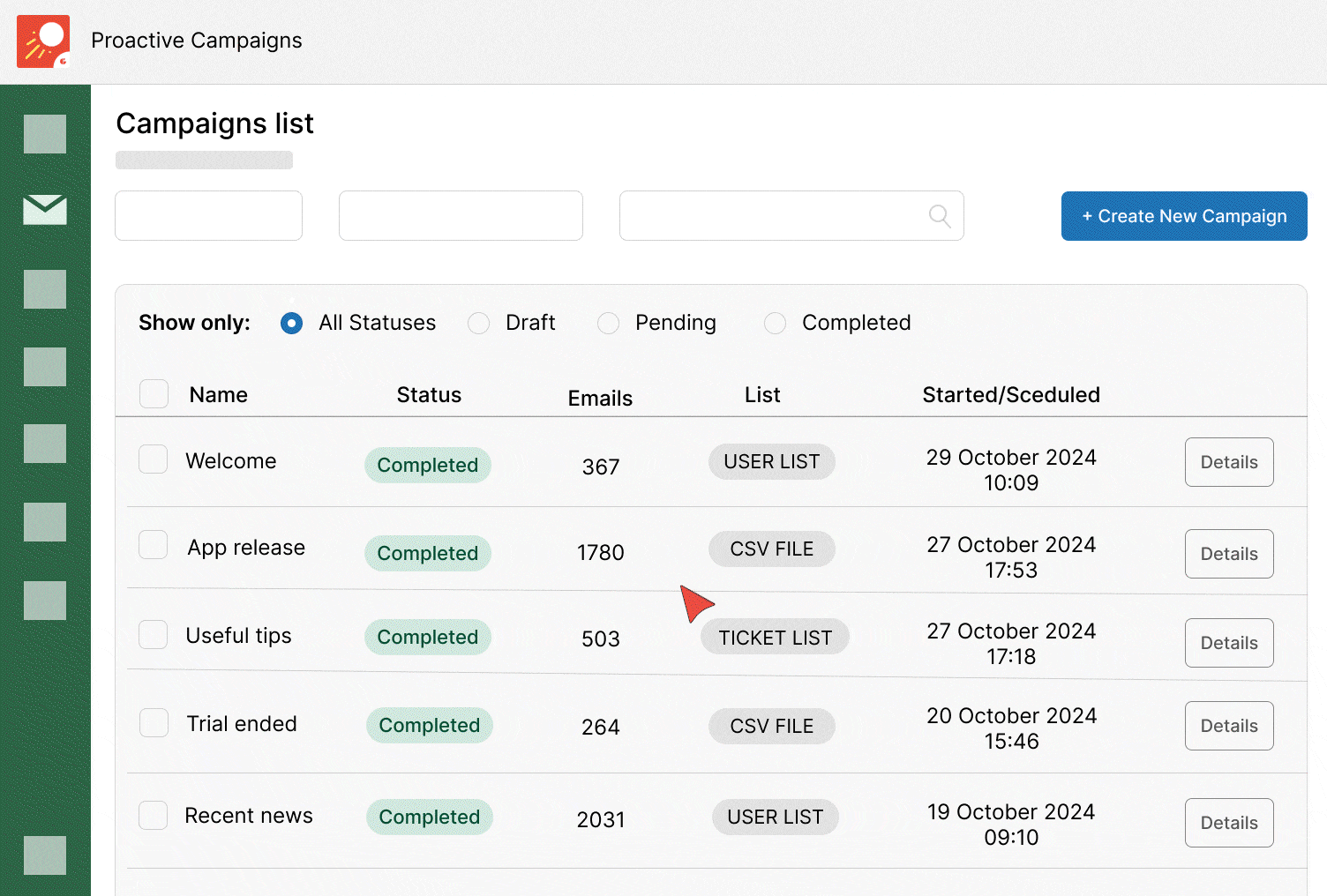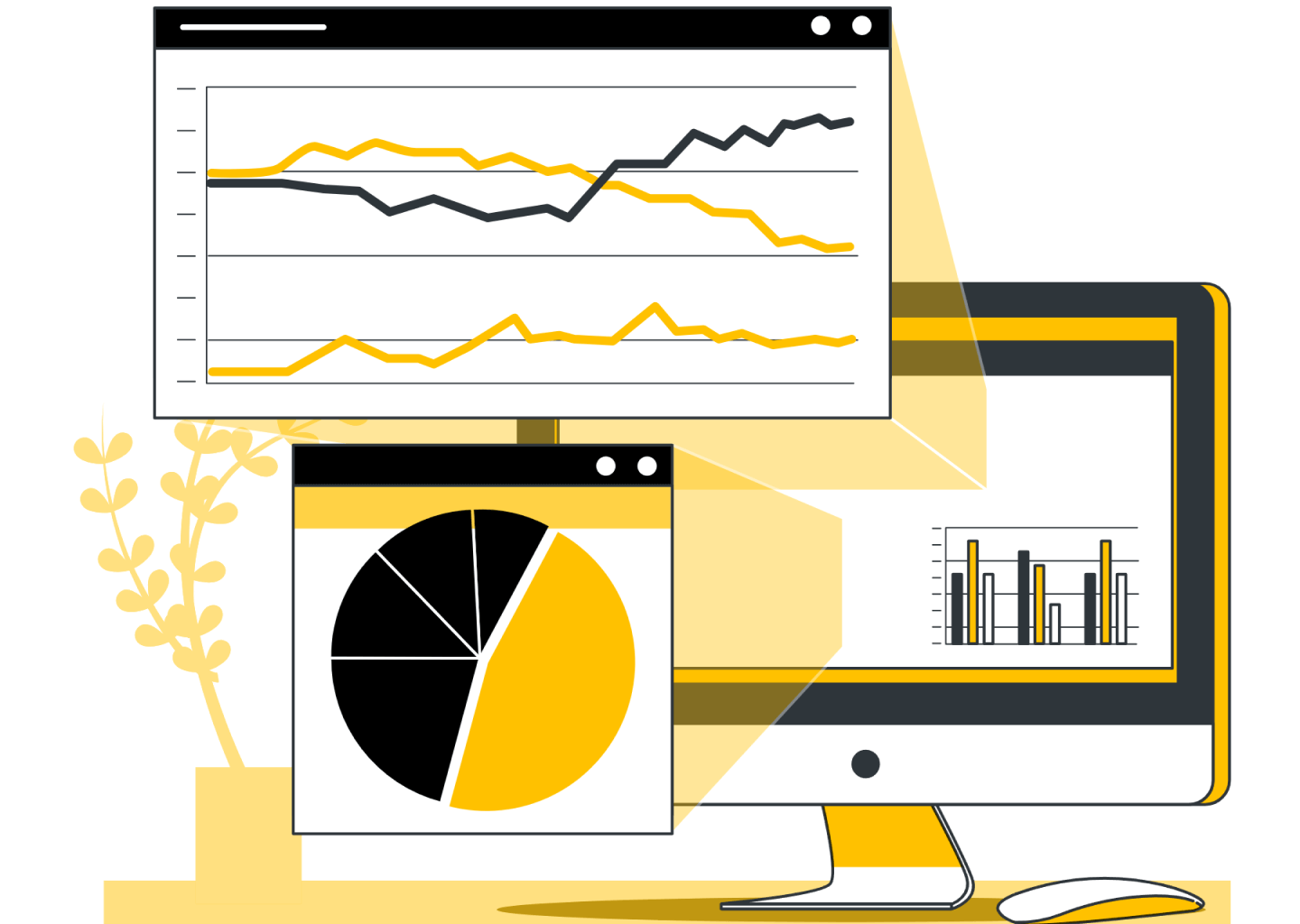That’s where marketing effectiveness comes into play. It’s the secret sauce that helps you understand not only what works, but also why it works and how to make it even better next time. Let’s dive deep into how you can measure, analyze, and improve your marketing performance with confidence and clarity.
What Is Marketing Effectiveness?
Simply put, marketing effectiveness measures how well your marketing activities achieve your desired goals, whether it’s brand awareness, lead generation, sales, or customer loyalty. Also, it tells you whether the time, money, and effort you’re investing are actually delivering results.
Think of it like this: marketing effectiveness is your GPS for success. Indeed, without it, you’re driving blindfolded, hoping you’ll eventually arrive somewhere good.
To make marketing truly effective, you need to align your actions with measurable outcomes. That means tracking, analyzing, and adjusting your strategies regularly.
For instance, if your goal is to increase conversions by 20% this quarter, effectiveness means checking which campaigns actually contributed to that growth, not just launching random promotions and hoping they stick.
Why Is It Important to Track and Measure Marketing Effectiveness?
Tracking and measuring marketing effectiveness is more than a nice-to-have; it’s a must-have. Obviously, without data, you’re making decisions based on gut feelings. Let’s be honest, feelings can sometimes lead you into a marketing labyrinth with no exit.
Here’s why tracking marketing performance is crucial:
- It helps you identify what’s working (and what’s not).
- It allows you to optimize your budget allocation.
- It provides tangible proof of ROI for stakeholders.
- It improves forecasting and future strategy planning.
- It helps build trust within your marketing and sales teams.
How Marketing Effectiveness Metrics Drive Better Results
Numbers don’t lie, but they do tell stories. So, marketing effectiveness metrics give you those stories, showing which channels are pulling their weight and which need a serious rethink.
For example:
- A low click-through rate (CTR) may suggest your ads aren’t engaging enough.
- A high cost per lead (CPL) could mean your targeting is off.
- A steady customer lifetime value (CLV) might indicate strong customer loyalty.
When you start connecting these dots, you can make smarter, data-driven decisions, like redirecting your ad budget to top-performing channels or adjusting your messaging to better resonate with your audience.
Key Benefits of Measuring Marketing Effectiveness for Growth
By now, you might be thinking: “Okay, I get it. Measuring is important. But what’s in it for me?” Great question.
Here’s what happens when you consistently measure marketing effectiveness:
- Increased ROI: You invest where the returns are highest.
- Smarter strategy: You double down on what’s proven to work.
- Improved team alignment: Everyone knows what success looks like.
- Enhanced customer insights: You understand your audience better.
- Sustainable growth: You stop wasting money on “meh” tactics.
In short, measurement gives you control. It turns marketing from guesswork into a growth engine.
Ways to Measure Marketing Effectiveness
There’s no one-size-fits-all approach to marketing effectiveness measurement. The methods you use depend on your business goals, target audience, and marketing channels. However, several universal strategies can help you measure performance more accurately and consistently.
Define Clear Goals to Measure Marketing Effectiveness
Before diving into dashboards and analytics, you need clarity. What does success mean for your brand? First and foremost, set SMART goals: Specific, Measurable, Achievable, Relevant, and Time-bound.
For example:
- Increase website traffic by 25% in three months.
- Generate 200 new leads through email campaigns this quarter.
- Boost customer retention rate by 10% year-over-year.
Once goals are defined, every metric you track will have a purpose. Without clear goals, measuring marketing is like chasing clouds; you’ll never catch them.
![]()
Use Advanced Data-Tracking Tools for Accurate Measurement
To measure marketing results effectively, use tools that collect, analyze, and visualize data in real-time. For instance, manual spreadsheets might work for small teams, but they quickly become a nightmare as you scale.
Popular tools include:
Google Analytics – for Web Traffic and User Behavior
Google Analytics remains one of the most powerful free tools for tracking website performance. It shows you where your traffic comes from, how users navigate through your site, and which pages convert best. With features like Behavior Flow, Events Tracking, and Goals, you can measure how visitors interact with your content from the moment they land to the moment they purchase or leave.
By integrating Google Analytics with ad platforms or CRM systems, you can also evaluate which marketing channels, such as organic search, social media, or paid ads, bring the most qualified traffic. The result? Data-driven clarity that allows you to focus efforts where they matter most.
HubSpot or Salesforce – for Lead Tracking and Sales Attribution
While website data tells you what users are doing, CRMs like HubSpot and Salesforce show you who those users really are and how they progress through the buyer’s journey. These tools connect marketing campaigns directly to revenue by tracking leads from the first touchpoint to the final conversion.
For example, HubSpot’s marketing dashboard lets you see which emails, landing pages, or ads influenced a lead’s decision to buy. Salesforce takes it further with sales attribution reports that pinpoint which campaigns generated actual deals. This closed-loop reporting ensures your marketing team isn’t just creating leads but creating leads that convert into paying customers, a crucial element of marketing effectiveness measurement.
Social Media Dashboards – Facebook, LinkedIn, and Instagram Insights
Social media is a goldmine of customer behavior data if you know how to read it. Platforms like Facebook Insights, LinkedIn Analytics, and Instagram Insights reveal which content resonates, who your audience is, and when engagement peaks. You can monitor post reach, follower growth, engagement rate, and click-throughs, then tie those metrics back to conversions.
By comparing engagement and referral data across channels, you can determine which platform drives the most valuable traffic to your site. For instance, you might find that LinkedIn generates fewer clicks but higher-quality B2B leads than Facebook. Those insights help you measure marketing effectiveness beyond surface-level vanity metrics and focus on what truly impacts growth.
Proactive Campaigns for Zendesk – for Targeted Communication Metrics
One often-overlooked yet incredibly valuable tool is Proactive Campaigns for Zendesk. It’s explicitly designed for customer-centric teams that want to send bulk messages, updates, and personalized notifications right from Zendesk. Unlike generic email tools, it connects directly with your customer support environment, ensuring every message aligns with ongoing service interactions.
From a marketing effectiveness measurement standpoint, Proactive Campaigns provides key metrics like delivery rates, open and click-through rates, and customer response tracking. For example, e-commerce companies can use it to notify customers about order delays or promotions, and instantly see how many recipients open or reply. This real-time insight helps you optimize future campaigns, test messaging styles, and gauge overall communication impact.
When used together with analytics platforms and CRMs, Proactive Campaigns completes the picture by connecting marketing outreach directly to customer satisfaction and retention, two of the most telling signs of marketing effectiveness.
Each of these tools brings unique strengths to the table. When integrated correctly, they form a cohesive data ecosystem that lets you monitor performance across every channel, campaign, and customer touchpoint. The goal isn’t just to gather data — it’s to use that data to make marketing smarter, faster, and more effective.

Identify and Focus on Key Marketing Effectiveness Metrics (KPIs)
Don’t try to track everything; that’s a fast track to overwhelm. Instead, focus on key performance indicators (KPIs) that truly reflect your goals.
Ask yourself:
- What metrics directly impact revenue?
- Which indicators show customer engagement or satisfaction?
- How can we connect marketing metrics with sales outcomes?
A few essential KPIs include conversion rate, ROI, CPL, CLV, and CTR — we’ll cover these next.
Establish a Regular Schedule for Monitoring Marketing Results
Measuring once and forgetting about it is like going to the gym once a year; it won’t get you anywhere. Consistency is key.
Create a schedule for tracking results weekly, monthly, and quarterly. Regular monitoring allows you to:
- Catch underperforming campaigns early.
- Test and tweak strategies in real time.
- Report progress accurately to leadership.
Even a simple habit of reviewing performance on Fridays can make a world of difference.
Key Metrics for Measuring Marketing Effectiveness
Conversion Rate
Your conversion rate measures how many users take a desired action, like signing up, buying, or downloading, compared to the total number of visitors.
A higher conversion rate usually means your content and offers are compelling. For instance, if 5 out of 100 visitors buy your product, your conversion rate is 5%. Not bad, but there’s always room for improvement, maybe that CTA button color isn’t doing you any favors!
Cost per Lead (CPL)
CPL tells you how much you’re spending to acquire a single lead. It’s essential for budgeting and understanding which campaigns deliver the best bang for your buck.
If your Facebook ads cost $500 and bring in 50 leads, your CPL is $10. But if your email campaign costs $300 for the same number of leads, you’ve found a winner.
Return on Investment (ROI)
ROI is the ultimate test of marketing effectiveness. It tells you whether your marketing spend is actually generating profit.
If your campaign brought in $10,000 and cost $2,000, your ROI is 400%. That’s marketing magic worth celebrating.
Customer Lifetime Value (CLV)
CLV estimates how much revenue a customer will bring in over their entire relationship with your business. This metric helps you prioritize long-term relationships over one-time sales.
A high CLV means your customers are satisfied, loyal, and likely to repurchase, the dream scenario for any marketer.
Click-Through Rate (CTR)
CTR measures how often people click on your ads, emails, or CTAs compared to how many saw them.
A strong CTR indicates your message is resonating. A weak one? Maybe your copy is too flat, or your audience just isn’t feeling it. Don’t worry, sometimes a tiny tweak in wording can make a huge difference.
The Main Mistakes in Measuring Marketing Effectiveness
Ignoring the Big Picture
Many marketers focus only on surface metrics like likes or shares. But vanity metrics don’t always equal real success. You might get thousands of likes and still see zero conversions. Always tie your metrics back to revenue and business goals.
Tracking Too Many Metrics
If you’re tracking 50 different KPIs, you’re not measuring; you’re drowning in data. Stick to the ones that matter most. More numbers don’t always mean more insight. Sometimes, it’s just marketing chaos with extra steps.
Not Comparing Data Over Time
Looking at one report in isolation is misleading. Trends over weeks or months reveal whether you’re improving or declining. Consistent comparison shows growth patterns and helps forecast results more accurately.
Failing to Connect Marketing and Sales Data
If your marketing and sales teams don’t share data, you’re missing half the story. Integrate systems so you can track leads from the first click to the closed deal. It’s a game-changer for understanding ROI.
How to Improve Marketing Efficiency
Use Data to Boost Marketing Results
Data is your best friend, and sometimes, your harshest critic. Use analytics to:
- Identify which campaigns generate the most conversions.
- Understand customer behavior and preferences.
- Personalize content and offers for higher engagement.
For example, if you notice that video ads outperform image ads by 40%, shift your focus there. It’s not rocket science, it’s clever marketing.
Streamline Processes for Efficiency
Efficiency isn’t just about cutting costs. It’s about maximizing output with the same (or fewer) resources. Automate repetitive tasks, integrate your marketing platforms, and create templates for common campaigns.
For instance, using tools like Video Reply for Zendesk can speed up personalized communication with customers, saving time while keeping engagement high.
When your workflows run smoothly, your team can focus on creative strategy instead of busywork.
Encourage Continuous Learning
Marketing evolves faster than you can say “algorithm update.” Keep your team sharp through:
- Regular training sessions
- Industry webinars
- Experimentation with new tools
Sometimes, trying a weird, awkward idea, like sending handwritten thank-you notes, actually works wonders. You never know until you test it.
Collaborate Across Departments
Marketing doesn’t live in a bubble. Collaborate with sales, support, and product teams. For instance, customer service feedback can reveal messaging gaps, while sales insights can refine targeting. Cross-department synergy is where true marketing effectiveness happens.
Conclusion
To put it simply: if you don’t measure marketing results, you’re flying blind. Measuring marketing effectiveness gives you the clarity and confidence to make smarter decisions, justify budgets, and continuously improve your campaigns.
Start by setting clear goals, choosing the right marketing effectiveness metrics, and tracking performance regularly. Avoid common mistakes, embrace data-driven insights, and never stop optimizing.
Because effective marketing isn’t about doing more, it’s about doing what works better. And yes, sometimes it might feel awkward, like dancing at a corporate party. But hey, that’s how growth happens.
FAQs About Measuring Marketing Effectiveness
1. What does it mean to measure marketing effectiveness?
Measuring marketing effectiveness means evaluating how well your marketing campaigns achieve their intended goals, whether that’s generating leads, boosting sales, or increasing brand awareness. It involves tracking marketing effectiveness metrics like ROI, conversion rate, and customer engagement to understand what’s truly working and what needs adjustment.
2. Why is it important to measure marketing results regularly?
Regular measurement helps you stay on top of your marketing performance. When you measure marketing results consistently, you can quickly spot trends, fix underperforming campaigns, and make smarter budget decisions. It also gives you real proof of impact, something both your team and leadership will appreciate.
3. What are the most important marketing effectiveness metrics to track?
Some of the most valuable marketing effectiveness metrics include:
- Conversion rate – How many visitors take the desired action
- ROI (Return on Investment) – How much profit your marketing brings compared to its cost
- CPL (Cost per Lead) – How much it costs to generate a single qualified lead
- CTR (Click-Through Rate) – How engaging your messages are
- CLV (Customer Lifetime Value) – The long-term value each customer provides
Tracking these KPIs will help you measure marketing effectiveness more accurately and focus on strategies that deliver real business growth.
4. How can I improve my marketing effectiveness?
Start by defining clear goals, collecting reliable data, and using analytics tools like Google Analytics, HubSpot, or Proactive Campaigns for Zendesk. Then, test different approaches, such as adjusting your audience targeting or experimenting with messaging. Over time, data will show which efforts deliver the best results, helping you continuously refine your strategy and improve marketing effectiveness.
5. What’s the difference between measuring marketing and analyzing performance?
Measuring marketing focuses on collecting key data, like conversions, reach, or engagement, while performance analysis goes a step further to interpret those numbers. In other words, measurement tells you what happened; analysis helps you understand why it happened and how to make it better. Both are crucial steps in a complete marketing effectiveness measurement process.







